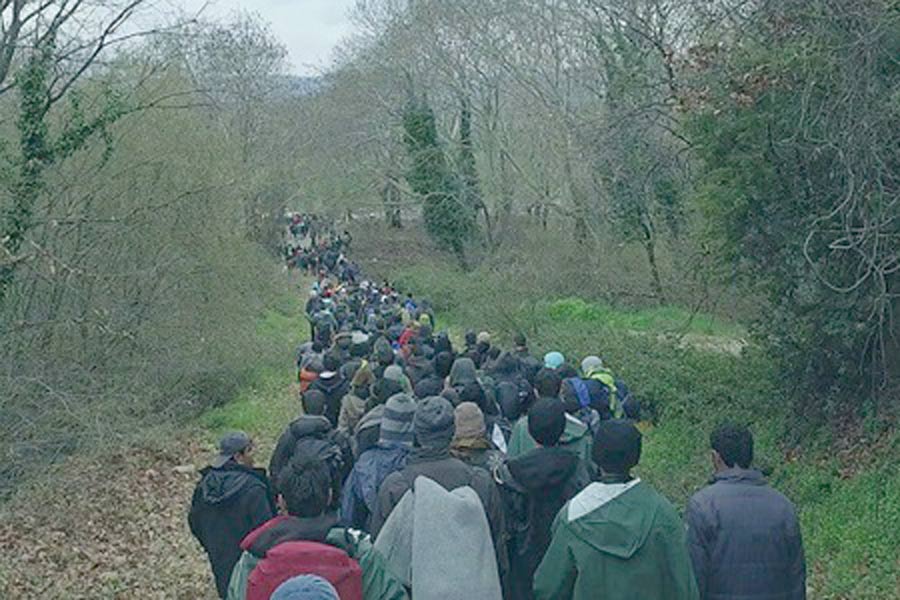Sculpturist and visual artist Ai Weiwei has made his reputation over recent decades as one of China’s most famous dissidents. He is best-known for his intricate “Bird’s Nest” Stadium built for the 2008 Summer Olympics in Beijing, and his “Trace” installation currently appears at the Hirshhorn Museum on the Mall. His latest art production is Human Flow, a documentary film, now playing at Parkway Theater in Baltimore, about what has been termed as the biggest mass human migration since World War II: 65 million people crossing borders in 2015-2016 alone.
The film’s central purpose is to shed light on the experience of being undocumented today. It is visually opulent and expansive, comprising a mixture of silent newsreels, facts taken from articles in major newspapers, and interviews with experts, refugees and officials. The narrative is less plot-driven than discursive, inviting the audience to think, feel and most of all, question. The film helps us to visualize the physical grandeur of the migration and experience the courage and tenacity of the human spirit. Ai himself experienced extended periods of exile and homelessness, and his film shows people laughing, singing and crying — not deeply angry and murderous, as anti-immigration politicians can make them seem.
If there is a political message at all, it is that much more needs to be done, even if it amounts to setting up permanent UNICEF camps such as in Lebanon, where at least a fraction of the refugee children are allowed the opportunity to attend school regularly and to experience a place called home.
In an interview with Smithsonian Magazine in 2012, Ai described his inspiration: “My work is always dealing with real or fake, authenticity, what the value is, and how the value relates to current political and social understandings and misunderstandings.” Indeed Human Flow’s magic is its overt realism. Ai shows refugees arriving in open boats, lining up for hours for food, spending weeks trekking through sleet and mud. They are the heroes and heroines of the film. The footage includes intimate scenes such as people picking grasses to cook in camp pots, sharing cat pictures on cell phones, and salvaging materials from buildings. Even when the refugees appear to be housed, for instance in one of Jordan’s grand camp-cities, they may be subject to political pressure. For some, the final humiliation comes when, after waiting for months at border camps, they are forcibly deported.
During the opening at the E Street Cinema in Washington, D.C., on Sept. 25, Ai Weiwei said he wants to emphasize the homeless refugees’ desperation and humanity: “The real, real tragedy is on each person. A woman, a child, every second they’re in this reality. Do they have a future, you would ask? And the answer is always quite sad.”
Ai Weiwei’s Human Flow Reimagines Immigration

Ai Weiwei
Region |Washington DC
email updates
We believe ending homelessness begins with listening to the stories of those who have experienced it.
Subscribe


